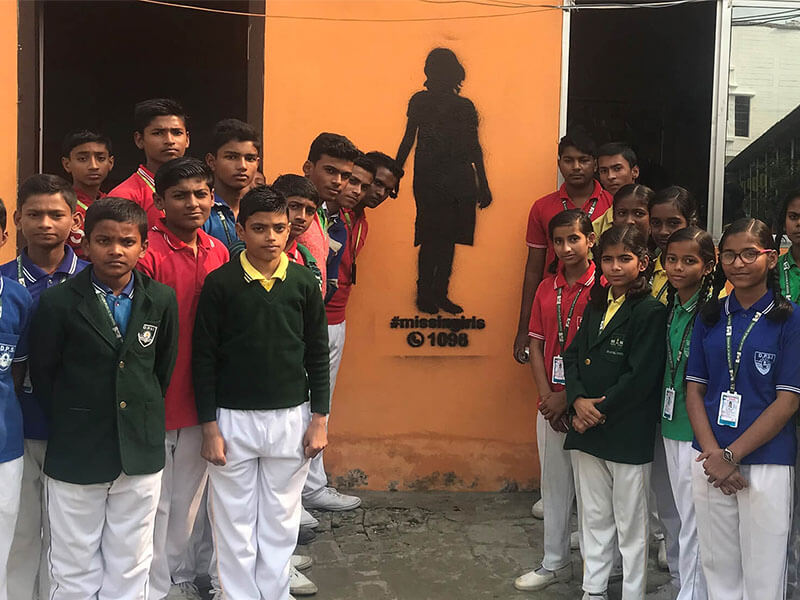
NGOCSTIP – Human Trafficking Prevention in Schools is essential to raising awareness and safeguarding students. It is critical to educate young people about the dangers and warning signs of human trafficking. Schools play a vital role in equipping students with the knowledge to protect themselves and others. To ensure effective prevention, educational materials must be informative and engaging.
Schools are ideal settings for early intervention. Students are at an age where they are susceptible to manipulation. Traffickers often target vulnerable individuals, making it necessary to educate students about these dangers. By integrating prevention programs, schools can make a significant difference in protecting children and teenagers.
“Read about: Taking a Stand: How Everyone Can Contribute to the Fight Against Human Trafficking”
Several resources are available to help prevent human trafficking in schools. These include informational pamphlets, online courses, and interactive workshops. Each resource serves a unique purpose in educating students and faculty members.
Pamphlets and brochures are an effective way to share vital information. These materials provide quick facts about human trafficking and its signs. They should include details on how students can report suspicious activity. Distributing these resources in common areas like classrooms, libraries, and hallways increases visibility.
Interactive workshops engage students in real-life scenarios. These workshops encourage discussion and teach students how to identify potential trafficking situations. Role-playing exercises help students practice responding to situations safely. Facilitators can also provide contact information for trusted adults or organizations to contact if they need help.
Online resources can be a flexible tool for training. Schools can offer online courses that students can complete at their own pace. These courses should cover topics such as recognizing red flags, online safety, and the importance of reporting suspicious activity. Videos, quizzes, and discussions ensure students retain important information.
Posters are powerful visual tools that can be placed around schools to remind students of the signs of human trafficking. These posters should specifically highlight key warning signs, such as sudden changes in behavior or unexplained absences. Furthermore, it is essential for students to understand the significance of reporting any suspicions of trafficking. By providing clear contact information for authorities, posters can encourage students to take action when necessary. In addition, the use of vibrant colors and simple messages on these posters can effectively grab attention and make the information more memorable. This approach ensures that students are always aware of the signs and know how to act in case of an emergency.
“Read more: Education Centered on Children’s Uniqueness”
Education on human trafficking should not stop at students. Schools can also provide resources for parents and community members. Parental involvement is crucial in the prevention process, as parents often have insight into their children’s lives. Hosting community events or sending out newsletters can help spread awareness to a wider audience.
Schools can use parent-teacher meetings as a platform to discuss human trafficking. During these meetings, they can share information on how parents can recognize early signs of trafficking and how they can protect their children. It’s important for parents to stay informed and involved in their children’s online and offline activities.
Schools can collaborate with local organizations that specialize in human trafficking prevention. By partnering with community groups, schools can host workshops, distribute resources, and promote awareness programs. These partnerships create a stronger support network for students and families.
Curriculum integration is another key method for preventing trafficking. Schools can include human trafficking topics in subjects like social studies, health, and ethics. Incorporating real-world issues into lessons makes the topic more relatable and empowers students to take action. Educators can highlight current events and case studies that demonstrate the prevalence of human trafficking globally and locally.
Social studies teachers can educate students about human rights and the global issues surrounding human trafficking. Lessons can include discussions about the legal frameworks protecting victims and the role of governments and organizations in combating trafficking.
Health education classes can teach students about personal safety, which includes learning how to avoid dangerous situations. Additionally, students can gain valuable knowledge about the mental and physical toll that trafficking takes on victims. Furthermore, educating students on topics such as consent and boundaries is crucial. In fact, understanding these concepts helps students recognize the importance of respecting personal limits and being aware of red flags. Moreover, by addressing these topics in health education, students can develop a deeper understanding of how to protect themselves and others from potential harm.
Teaching students about empathy and their responsibility to others is essential. Ethical discussions around human trafficking can help students understand their role in preventing such crimes. Students can explore the importance of standing up for those who are vulnerable.